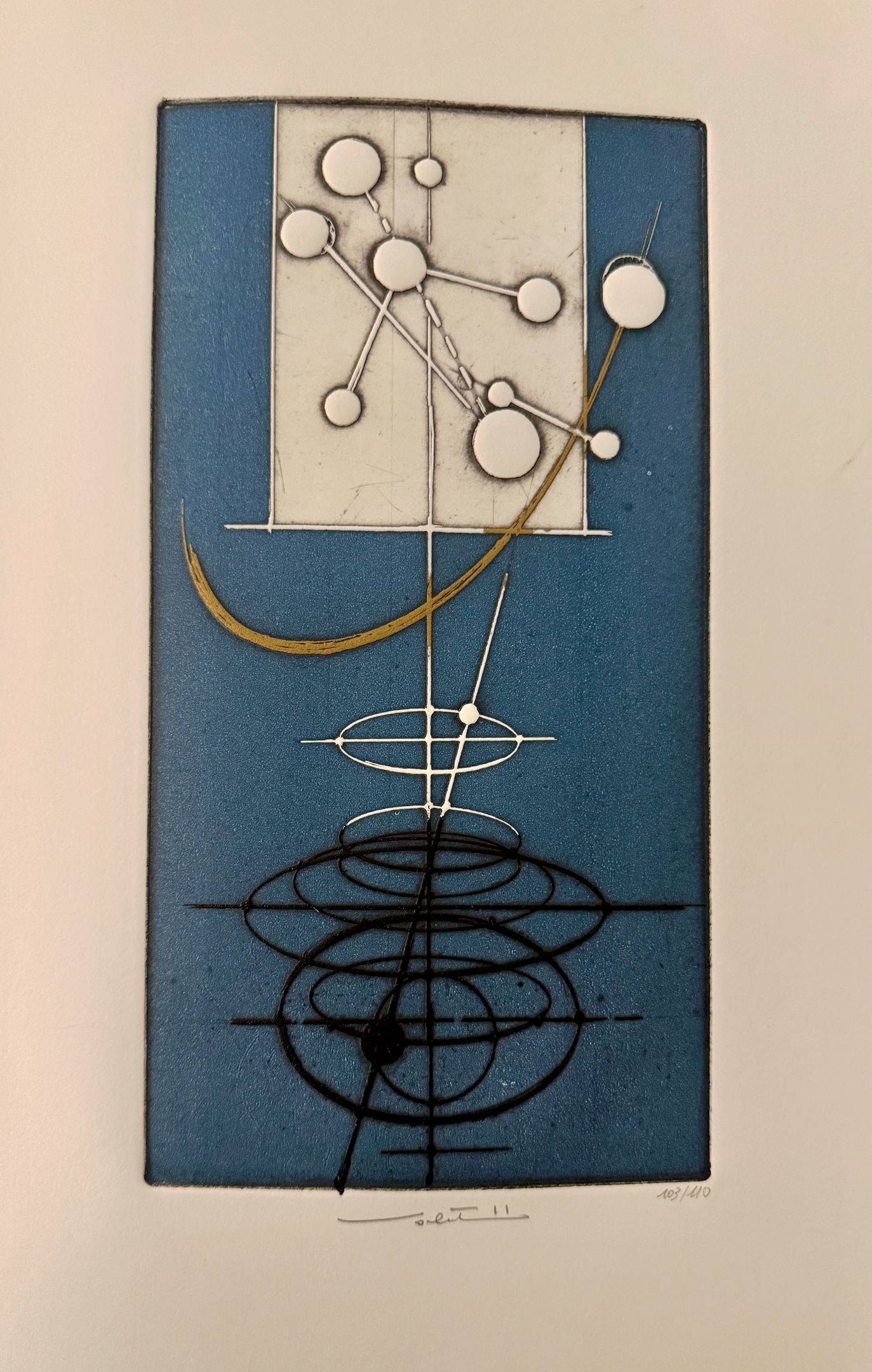








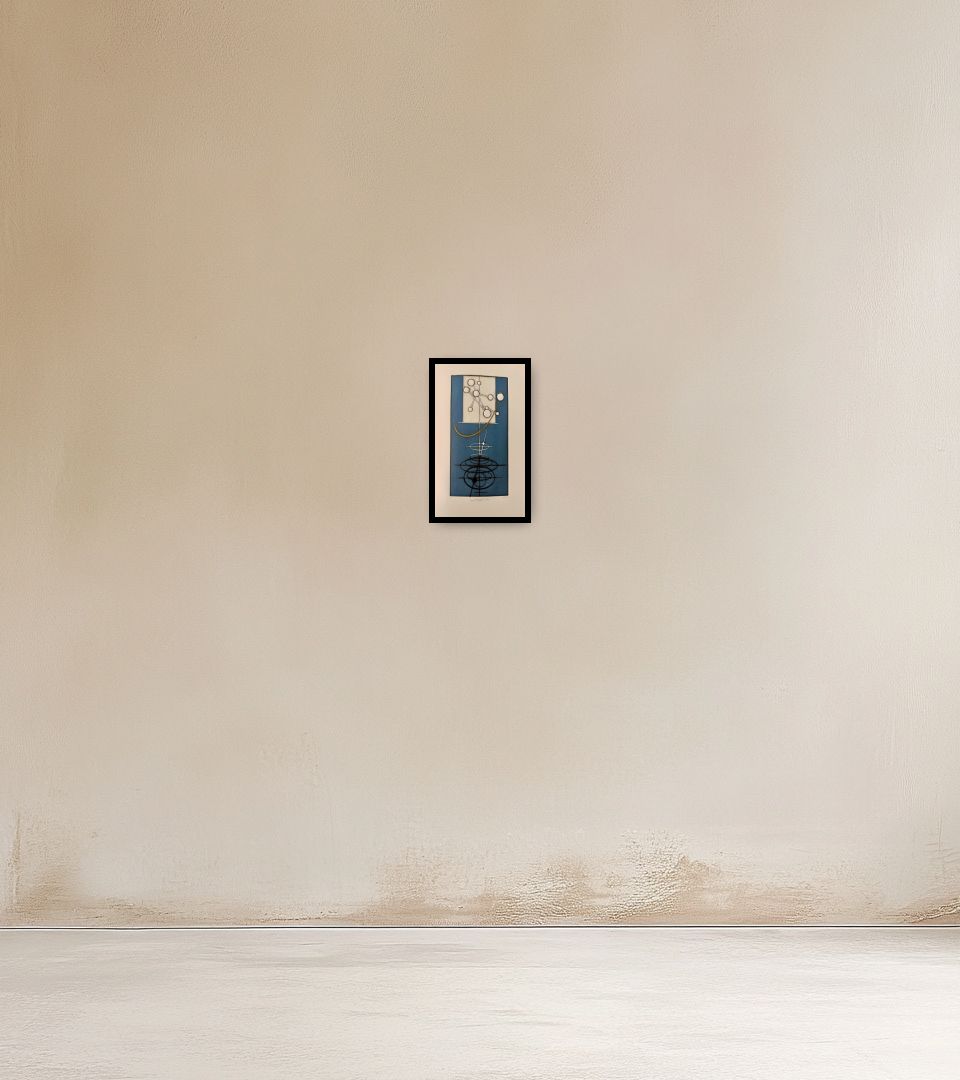
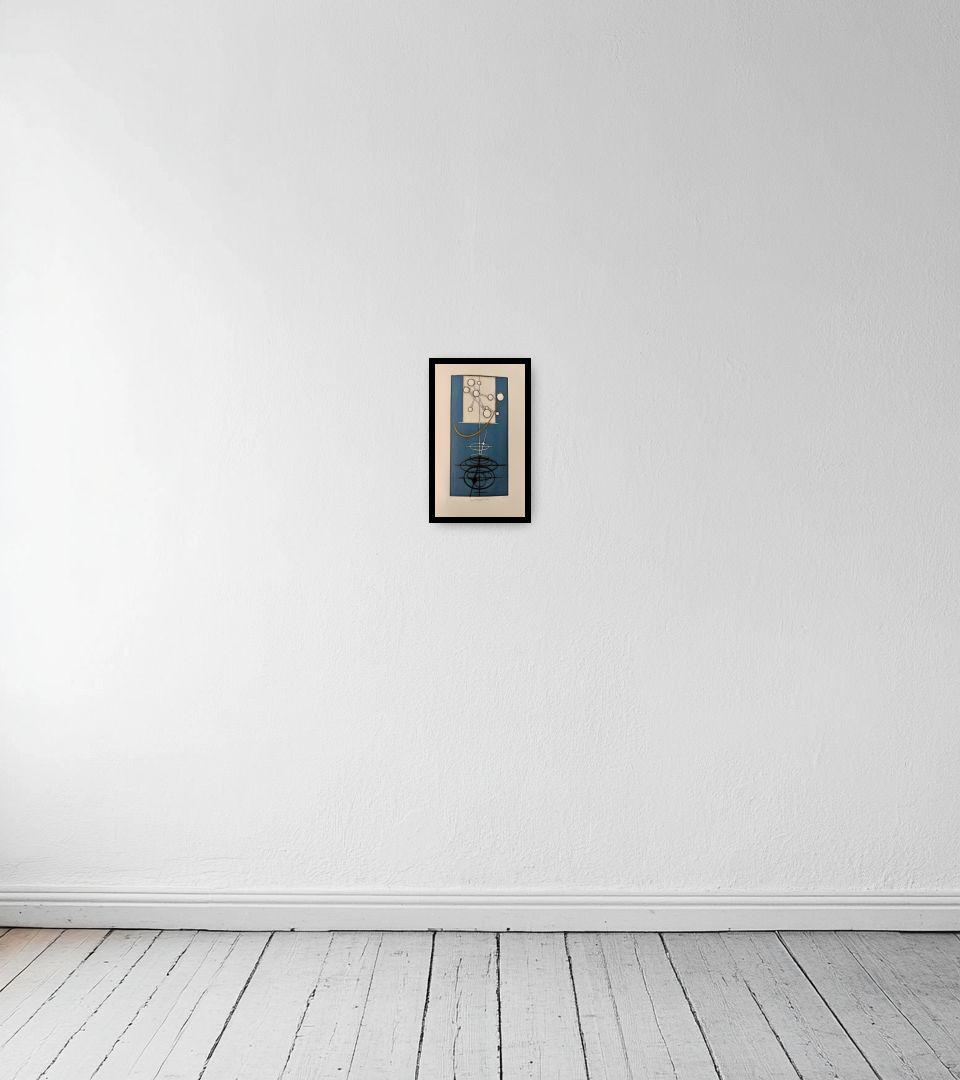
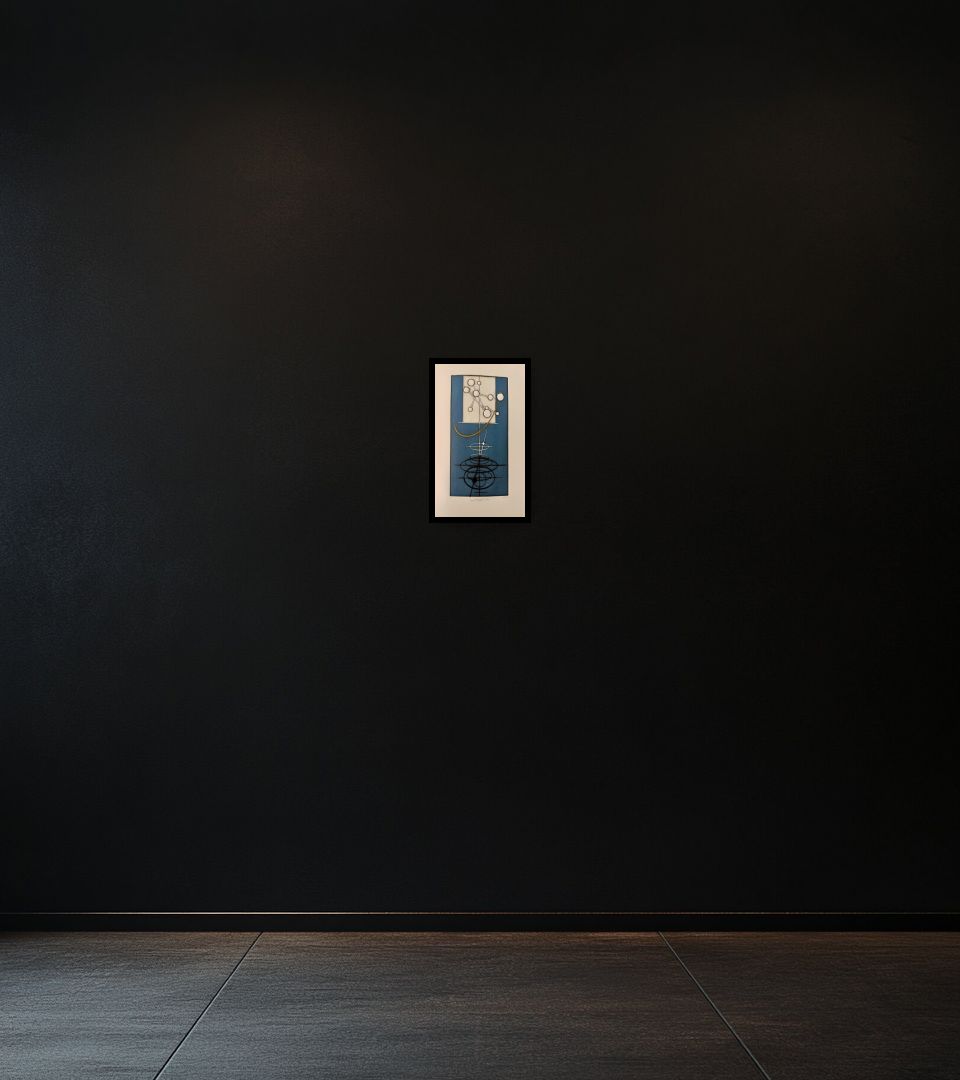
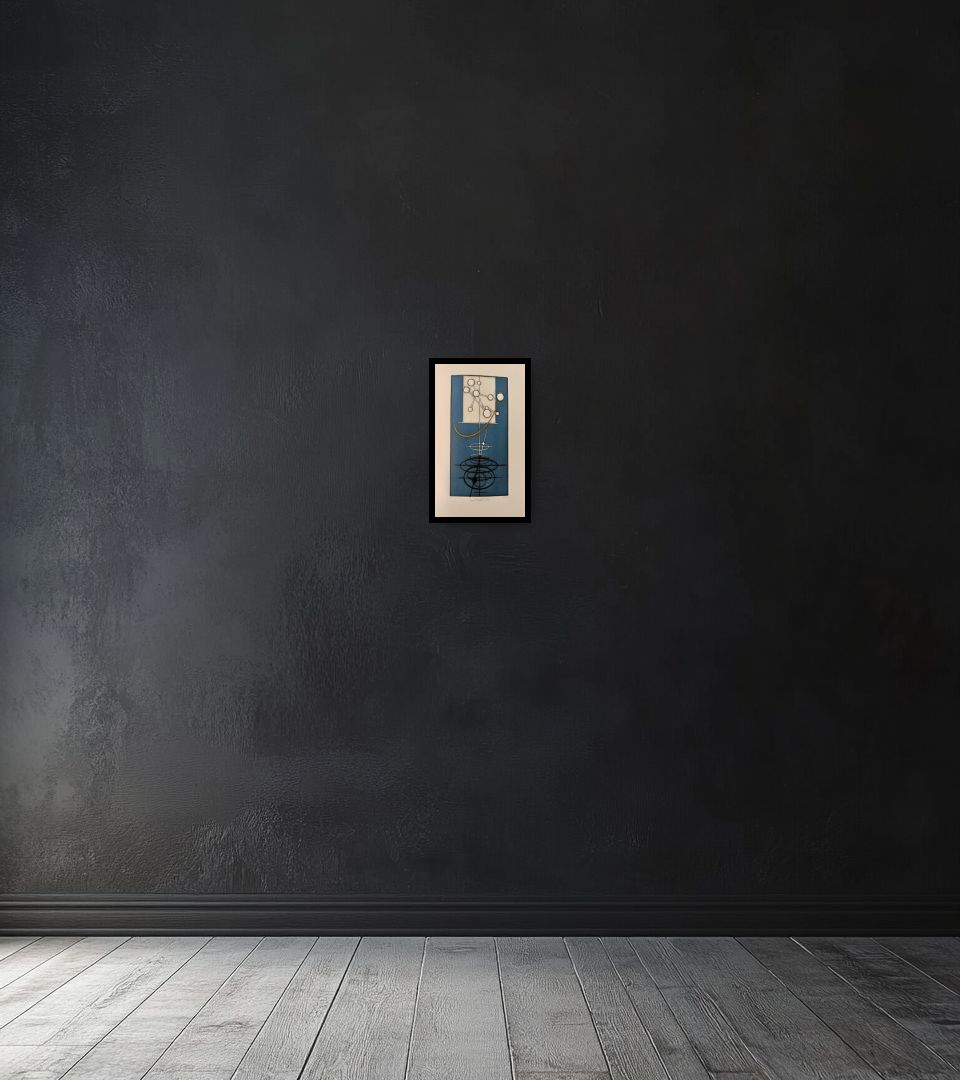



— The sculpture embodies the spirit of a traveler charting invisible territories. Valentini constructs an imaginary space where geometry and motion converge, giving form to the eternal voyage of thought. The composition — a constellation of orbits, ellipses, and vectors — unfolds against a deep blue field, suggesting both sea and sky. It recalls the instruments of navigation and the visionary maps of astronomers, merging the language of science with the poetics of metaphysical discovery.
The precision of Valentini’s line conveys a sense of disciplined wonder. Circles act as celestial bodies, their intersections hinting at gravitational relationships between order and chaos. A thin golden curve, cutting through the field, becomes a trajectory of light — an emblem of aspiration, of the mind’s voyage through the unknown. In this delicate equilibrium, the artist evokes both motion and stillness, suggesting that exploration is an inner act as much as a cosmic one.
In Nauta Celeste, Valentini transforms geometry into a metaphor for consciousness itself. His work speaks of humanity’s endless desire to orient itself amid the vastness of existence, to find harmony within complexity. The etching is both a chart and a dream — a meditation on the beauty of order, the fragility of knowledge, and the profound serenity that arises when the measurable meets the infinite.
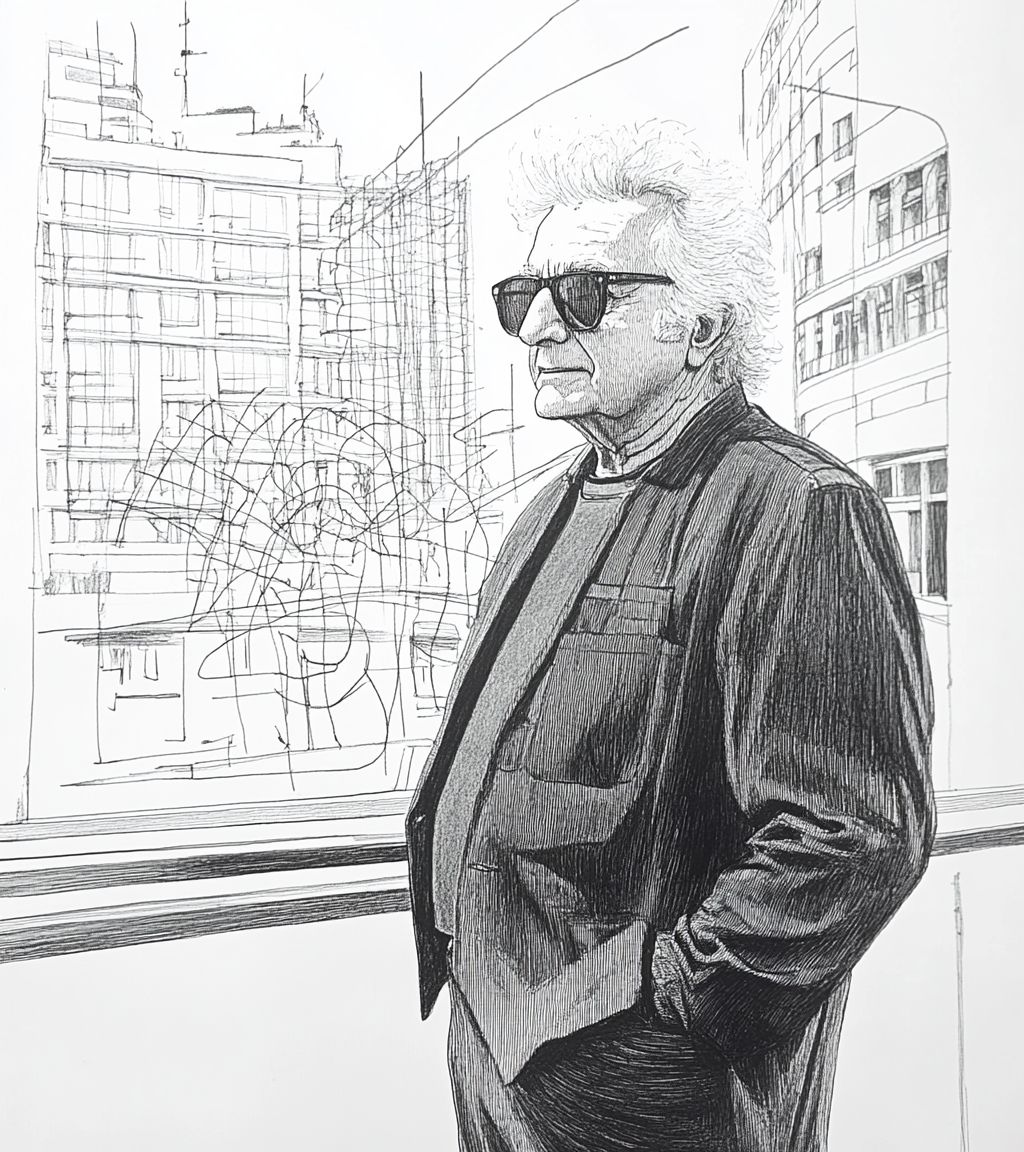
Walter Valentini’s work is known for its geometric abstraction, characterized by architectural structures, circular forms, lines, and symbolic motifs. He explored metaphysical ideas such as time, space, and order through rigorous compositions that evoke celestial mechanics, Renaissance perspective, and cosmological harmony.